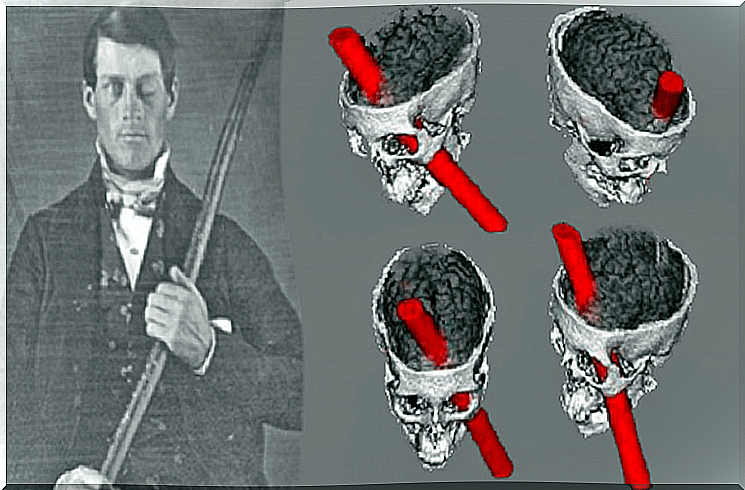Three Clinical Cases That Changed What We Thought About Our Brain

Neurosciences have made progress thanks to arduous research that includes ordinary clinical cases, but also other truly surprising ones. Some of these cases have transcended, mainly because their contribution has been decisive in understanding the functioning of the brain.
Human beings have been resistant to admitting that the so-called “soul” or the so-called “heart” actually correspond to processes that take place in the brain. Precisely what is valuable about those clinical cases that have become classic is that, in one way or another, they show the action of the brain in our psychic world.
We are still far from understanding the brain. However, step by step he has progressed, unraveling mysteries and finding others. The three clinical cases that we present below deserve to be remembered and taken into account for what they have supposed in this regard.
Phineas Gage, one of the most interesting clinical cases
Phineas Gage was a railroad worker from the United States who suffered an unusual accident. In September 1848, the young worker had to dynamite a rock, but he made a mistake and the explosion occurred earlier than expected. As a result of this miscalculation, Phineas flew more than 20 meters. He also received the impact of a metal bar that embedded itself in his cheek and pierced his skull, exiting through his forehead.

Dr. Harlow attended him and it was he who left testimony of what happened. The doctor was very impressed by the fact that Phineas remained conscious after the accident and showed no signs of having lost contact with reality. He went through a recovery that lasted only 10 weeks and at no point did he show he had lost his cognitive ability.
After recovery, Phineas Gage returned to his usual duties, but began to show various changes in his personality. He used to be a mild man and became extremely irritable. The same happened with other traits. This is one of the clinical cases that became classic because it constituted evidence that behavior patterns – or even what we call personality – are physically related to the brain.
Despite this, some scholars suggest that the effect of trauma and facial disfigurement was not studied in sufficient detail. In the opinion of some, these factors could also have a great influence on the change that Phineas underwent.
The case of patient HM
This is also one of the clinical cases that impacted the world of science. He refers to Henry Molaison, who went down in history as the “HM patient.” When he was 27 years old, he underwent surgery and part of his brain was removed, which included the hippocampus and a piece of the amygdala. The goal was to end the epileptic seizures that this man suffered.

The result of the surgery was, to say the least, surprising. The HM patient became unable to store new memories. He had a memory of everything that had happened before the surgery, but nothing more. This man was always, literally, in the present. I forgot everything as soon as it happened. For example, if someone entered, greeted him and later left, when he returned a short time later, HM was unable to recognize him.
Throughout his life, the HM patient lived surrounded by doctors and in the midst of the terrible tragedy of not being able to form new memories. He died in 2009. As his was one of the most famous clinical cases, he performed a brain autopsy with live webcast. There it was discovered that the most deteriorated area of his brain was the “entorhinal cortex”, the same one that breaks down in the early stages of Alzheimer’s.
The Donald case
Donald was a man who murdered his girlfriend under the influence of PCP (phencyclidine). Then he remembered nothing. Faced with this, an organic amnesia was diagnosed. After being released from psychiatric confinement, Donald suffered a severe blow to the head that left him in a coma. When he woke up, something extraordinary began to happen.

Donald began to remember the murder, over and over again, until that very memory became uncontrollable. He continually saw the murder in his mind and recreated it in a repetitive and desperate way for him. He also had seizures and numbness on the left side of his body.
Donald’s is one of the most mysterious clinical cases. Science has not yet been able to explain why a lost memory returned. Much less is known why when the memory returned it manifested itself in such a stormy way for the patient, beyond the stormy memory itself.
These are just some of the most relevant clinical cases in history. Each of them has made it possible to advance, sometimes groping, in the knowledge of that fabulous organ that is the brain. Unfortunately, the people who have allowed this advance had to suffer the effects of not having “a normal brain”. Despite this, they inadvertently made a great gift to humanity.









